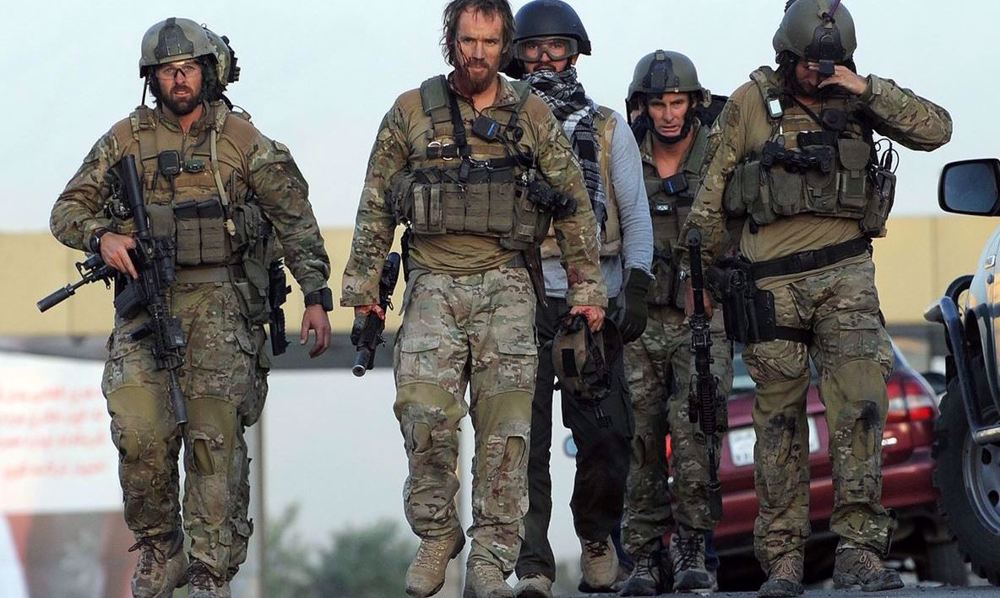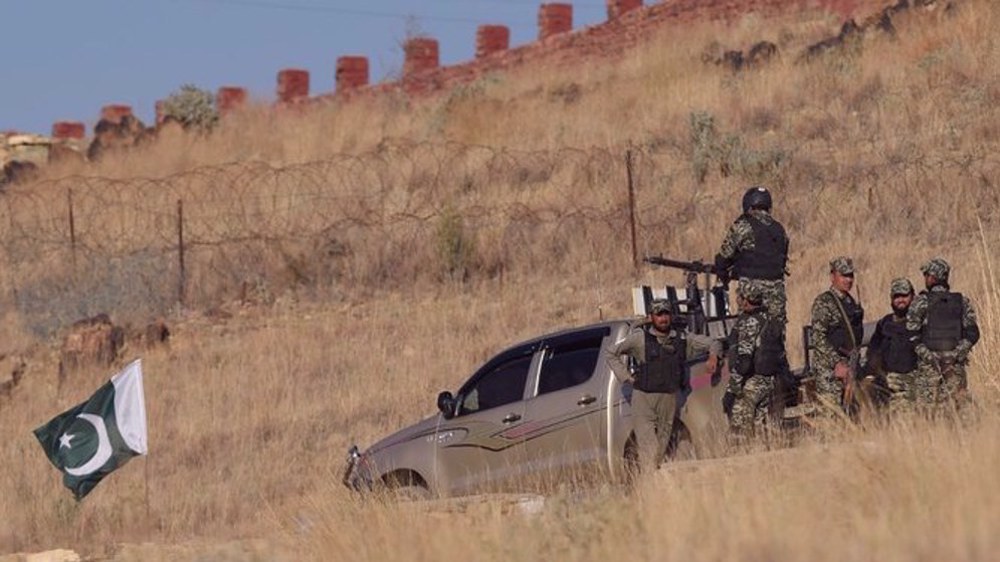Locals in east Afghanistan complain of diseases caused by US ‘mother of all bombs’
Over two and a half years after the United States dropped its most powerful non-nuclear bomb on an eastern Afghan province, locals are now complaining that America’s “mother of all bombs” have brought them “many diseases” and affected crop yield in agricultural lands.
Back in April 2017, the US military dropped the biggest bomb in its non-nuclear arsenal onto what it described as a Daesh hideout in Afghanistan’s Nangarhar Province.
According to the Afghan government, the attack killed more than 90 Daesh militants. The US, however, did not release any figure.
Almost two and a half years on, local residents are reporting “many diseases” and health problems that they believed have been caused by the bomb.
Afghan news channel Tolonews has cited local residents saying the diseases have emerged in regions close to the targeted area.
One of the residents told the news outlet that many children and teenagers were suffering from skin problems.
“The ‘mother of all bombs’ was dropped here,” said Pacha Shinwari, a local resident. “You can see that the stones can be broken easily, the plants are dry, the trees are dry, the nearby houses are all destroyed — 40 or 50 of them.”
“The government evacuated the people (before the bomb was dropped), but when we came back, we saw that the houses were destroyed,” said another resident.
The residents also explained that the agricultural yields “are not the same as in the past. The harvests are lesser than in the past.”
Just days after the bombing, an Afghan parliamentary delegation visited the province to investigate the impact of the bomb; however, no further probes could be conducted in the area due to security issues, officials said.
But now, the Afghan Ministry of Public Health says it is set to dispatch researchers and medics to the bombing site as well as hospitals in Jalalabad, the provincial capital of Nangarhar to conduct further analysis on the bomb’s impact.
Military affairs analyst Atiqullah Amarkhil said the bomb, officially known as the GBU-43/B Massive Ordnance Air Blast (MOAB), has three major health impacts, the first of them affecting the eyes.
“People will feel irritation in their eyes. Second, it impacts the inner organisms of the people who breathe the air where it has been used,” he said.
He said the MOAB also “impacts pregnant women and newborn babies… Afghanistan is a laboratory now. Third, it has an impact on lungs.”
The government of President Ashraf Ghani had praised the US military for using the bomb against the militants, saying it was a joint operation by Afghan and international troops.
President Donald Trump also praised the US “incredible US military” for dropping the bomb.
The mayor of Achin, the site of the attack, however, had said that such a large-scale strike against a relatively small militant group was unnecessary.
Afghan civilians have long been the main victims of Washington’s so-called war on terror.
They have been targeted by US drone attacks, improvised explosive devices (IEDs), assassinations, bombings, and night raids targeting suspected militants.
The United Nations reported last month that civilian casualties caused by the long and intensifying conflict had reached a record number in the third quarter of 2019.
The US invaded Afghanistan in October 2001 and overthrew a Taliban regime in power at the time, vowing to bring stability to the war-ravaged nation.
The Taliban’s five-year rule came to an end following the US invasion, but 18 years on, Washington has failed to end militancy.
Taking advantage of the chaos, the Daesh terror group has established a foothold in eastern and northern Afghanistan after losing the territories it once held in Iraq and Syria.
There have been reports of the US military secretly transferred the remaining Daesh terrorists from the Middle East to Afghanistan.
Israeli minister Ben-Gvir quits Netanyahu’s coalition over Gaza ceasefire
Hamas names 3 Israeli captives to be freed under Gaza ceasefire deal
Gaza ceasefire agreement ‘biggest defeat’ for Israel: Gen. Qa’ani
Iran’s digital economy wonders in face of sanctions
US warplanes target north of Yemen’s capital in fresh aggression
Rights group files war crimes case in Spain against Israeli soldier
VIDEO | Huge drop in mass protests against Trump’s 2nd inauguration
Gaza ceasefire agreement begins













 This makes it easy to access the Press TV website
This makes it easy to access the Press TV website